-
 Bitcoin
Bitcoin $108,489.6704
1.13% -
 Ethereum
Ethereum $2,502.0528
2.92% -
 Tether USDt
Tether USDt $1.0002
0.00% -
 XRP
XRP $2.1941
0.51% -
 BNB
BNB $655.3375
1.00% -
 Solana
Solana $151.5977
1.27% -
 USDC
USDC $0.9999
0.00% -
 TRON
TRON $0.2768
0.32% -
 Dogecoin
Dogecoin $0.1676
2.86% -
 Cardano
Cardano $0.5675
0.98% -
 Hyperliquid
Hyperliquid $40.6109
7.48% -
 Bitcoin Cash
Bitcoin Cash $500.7746
2.09% -
 Sui
Sui $2.8328
2.03% -
 Chainlink
Chainlink $13.4452
1.26% -
 UNUS SED LEO
UNUS SED LEO $9.1623
0.39% -
 Avalanche
Avalanche $18.2267
2.24% -
 Stellar
Stellar $0.2382
0.00% -
 Toncoin
Toncoin $2.8885
1.68% -
 Shiba Inu
Shiba Inu $0.0...01159
0.91% -
 Litecoin
Litecoin $87.1827
0.88% -
 Hedera
Hedera $0.1511
2.90% -
 Monero
Monero $315.4992
-0.59% -
 Polkadot
Polkadot $3.4663
2.34% -
 Bitget Token
Bitget Token $4.6118
-0.65% -
 Dai
Dai $1.0000
-0.01% -
 Ethena USDe
Ethena USDe $1.0003
0.02% -
 Uniswap
Uniswap $7.2989
4.69% -
 Pepe
Pepe $0.0...01003
5.73% -
 Aave
Aave $275.5616
7.15% -
 Pi
Pi $0.5181
-2.49%
NFT transaction gas fees are too high? In-depth comparison of Layer2 solutions
High gas fees hinder NFT transactions on Ethereum; Layer2 solutions like Polygon and Immutable X offer relief by processing transactions off-chain.
May 08, 2025 at 04:50 am
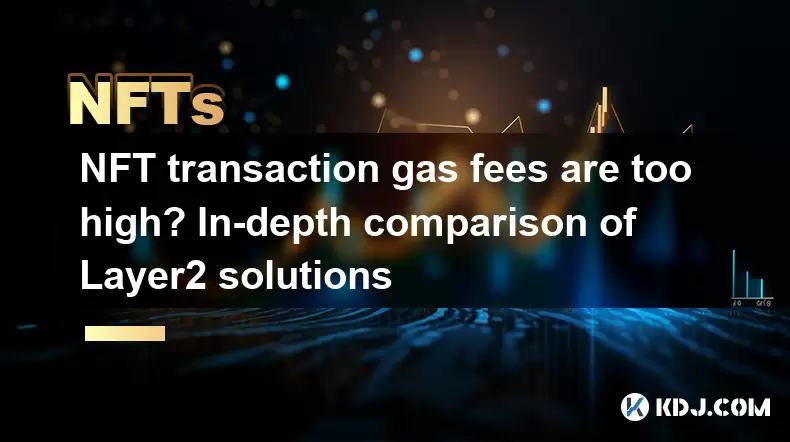
High gas fees have been a persistent issue for users engaging in NFT transactions on the Ethereum blockchain. As the popularity of NFTs continues to soar, the demand for efficient and cost-effective solutions becomes increasingly critical. This article delves into the world of Layer2 solutions, offering an in-depth comparison of various options that aim to alleviate the burden of high gas fees for NFT enthusiasts.
Understanding Gas Fees and Their Impact on NFT Transactions
Gas fees are payments made by users to compensate for the computational energy required to process and validate transactions on the Ethereum network. These fees can fluctuate significantly based on network congestion, with NFT transactions often incurring higher costs due to their complex nature. For many users, these high fees can be a significant barrier to entry, limiting their ability to participate in the vibrant NFT ecosystem.
The impact of high gas fees on NFT transactions is multifaceted. Not only do they increase the cost of buying and selling NFTs, but they also affect the overall user experience. High fees can deter new users from entering the market and may lead to a decrease in transaction volume, ultimately stifling the growth and adoption of NFTs.
The Role of Layer2 Solutions in Reducing Gas Fees
Layer2 solutions are designed to enhance the scalability and efficiency of blockchain networks by processing transactions off the main Ethereum chain. By doing so, they can significantly reduce gas fees and improve transaction speeds, making NFT transactions more accessible and cost-effective for users.
These solutions work by bundling multiple transactions together and settling them on the Ethereum mainnet in a single transaction. This approach not only reduces the load on the network but also minimizes the gas fees associated with each individual transaction. As a result, Layer2 solutions have become an attractive option for NFT enthusiasts looking to mitigate the impact of high gas fees.
Comparing Popular Layer2 Solutions for NFT Transactions
Several Layer2 solutions have emerged to address the issue of high gas fees for NFT transactions. Let's explore some of the most popular options and compare their features, benefits, and potential drawbacks.
Polygon (MATIC)
Polygon, formerly known as Matic Network, is one of the most widely adopted Layer2 solutions for NFT transactions. It offers a scalable and secure platform that enables users to mint, buy, and sell NFTs at significantly lower gas fees compared to the Ethereum mainnet.
- Benefits: Polygon boasts fast transaction speeds, low gas fees, and seamless integration with existing Ethereum-based applications. It also supports a wide range of NFT marketplaces and projects, making it a versatile choice for users.
- Drawbacks: While Polygon has gained significant traction, some users may be concerned about the centralization of its validator nodes. Additionally, the security of Polygon relies on the security of the Ethereum mainnet, which may be a consideration for some users.
Optimism
Optimism is another popular Layer2 solution that aims to reduce gas fees for NFT transactions. It uses optimistic rollups to process transactions off-chain and then settles them on the Ethereum mainnet.
- Benefits: Optimism offers significant gas fee reductions and fast transaction confirmation times. It also maintains a high level of security by leveraging the Ethereum mainnet for final settlement.
- Drawbacks: One potential drawback of Optimism is the need for a withdrawal period, during which funds are locked before being transferred back to the Ethereum mainnet. This may impact the liquidity of NFTs for some users.
Arbitrum
Arbitrum is a Layer2 solution that utilizes optimistic rollups to enhance the scalability and efficiency of Ethereum-based NFT transactions. It aims to provide a seamless user experience while significantly reducing gas fees.
- Benefits: Arbitrum offers low gas fees, fast transaction speeds, and a high level of compatibility with existing Ethereum smart contracts. It also supports a wide range of NFT projects and marketplaces.
- Drawbacks: Similar to Optimism, Arbitrum requires a withdrawal period for funds to be transferred back to the Ethereum mainnet. Additionally, the complexity of its technology may be a barrier for some users to understand and adopt.
Immutable X
Immutable X is a Layer2 solution specifically designed for NFT transactions. It uses zero-knowledge rollups to enable instant, gas-free NFT minting and trading.
- Benefits: Immutable X offers the most significant gas fee reductions among the solutions discussed, with transactions being processed entirely off-chain. It also provides a user-friendly experience and supports a growing ecosystem of NFT projects.
- Drawbacks: As a relatively new solution, Immutable X may face challenges in terms of adoption and integration with existing NFT marketplaces. Additionally, its reliance on zero-knowledge proofs may raise concerns about the long-term security and scalability of the platform.
Choosing the Right Layer2 Solution for Your NFT Transactions
When selecting a Layer2 solution for your NFT transactions, it's essential to consider your specific needs and priorities. Factors such as gas fee reductions, transaction speeds, security, and compatibility with existing NFT projects should all be taken into account.
- Gas Fee Reductions: If minimizing gas fees is your top priority, Immutable X may be the most suitable choice, as it offers gas-free transactions. However, if you're willing to accept slightly higher fees in exchange for other benefits, Polygon, Optimism, or Arbitrum may be more appropriate.
- Transaction Speeds: For users who value fast transaction confirmation times, Polygon and Immutable X are strong contenders, as they offer near-instantaneous processing of NFT transactions.
- Security: If security is a primary concern, Optimism and Arbitrum may be more appealing, as they leverage the security of the Ethereum mainnet for final settlement.
- Compatibility: If you're already invested in specific NFT projects or marketplaces, it's crucial to choose a Layer2 solution that is compatible with your existing ecosystem. Polygon, for example, has gained widespread adoption and supports a wide range of NFT platforms.
Implementing Layer2 Solutions for NFT Transactions
To start using a Layer2 solution for your NFT transactions, you'll need to follow a few simple steps. Let's take a look at the process using Polygon as an example:
- Set up a Polygon-compatible wallet: Choose a wallet that supports Polygon, such as MetaMask or Trust Wallet. Ensure that you have the necessary funds in your wallet to cover any gas fees associated with bridging your assets to Polygon.
- Bridge your assets to Polygon: Use a bridge service, such as the official Polygon Bridge, to transfer your Ethereum-based NFTs to the Polygon network. This process may involve paying a small gas fee on the Ethereum mainnet.
- Interact with Polygon-based NFT marketplaces: Once your assets are on the Polygon network, you can start minting, buying, and selling NFTs on Polygon-compatible marketplaces, such as OpenSea or Rarible. These transactions will be processed at significantly lower gas fees compared to the Ethereum mainnet.
- Withdraw your assets (if needed): If you need to transfer your NFTs back to the Ethereum mainnet, you can use the bridge service again. Keep in mind that this process may involve a withdrawal period and additional gas fees.
By following these steps, you can take advantage of the benefits offered by Layer2 solutions and enjoy a more cost-effective and efficient NFT trading experience.
Frequently Asked Questions
Q: Can I use multiple Layer2 solutions for my NFT transactions?
A: Yes, it is possible to use multiple Layer2 solutions for your NFT transactions. However, you'll need to ensure that the NFTs you're working with are compatible with each solution and that you have the necessary funds in your wallet to cover any associated fees. Keep in mind that using multiple solutions may add complexity to your trading experience.
Q: Are there any risks associated with using Layer2 solutions for NFT transactions?
A: While Layer2 solutions offer significant benefits in terms of gas fee reductions and transaction speeds, there are some potential risks to consider. These include the security of the Layer2 solution itself, the potential for centralization, and the reliance on the Ethereum mainnet for final settlement. It's essential to research and understand the specific risks associated with each solution before using it for your NFT transactions.
Q: Can I still participate in NFT airdrops and other events on the Ethereum mainnet if I'm using a Layer2 solution?
A: The ability to participate in NFT airdrops and other events on the Ethereum mainnet while using a Layer2 solution depends on the specific solution and the requirements of the event. Some Layer2 solutions, such as Polygon, have their own ecosystem of projects and events, while others may require you to bridge your assets back to the Ethereum mainnet to participate. It's crucial to check the eligibility criteria for each event and ensure that you can meet them using your chosen Layer2 solution.
Q: How do I know if an NFT marketplace supports a specific Layer2 solution?
A: To determine if an NFT marketplace supports a specific Layer2 solution, you can check the marketplace's official documentation or website. Many marketplaces will have a section dedicated to supported networks or chains, where you can find information about the Layer2 solutions they integrate with. Additionally, you can often find this information by searching for the marketplace and the Layer2 solution together on social media or community forums.
Disclaimer:info@kdj.com
The information provided is not trading advice. kdj.com does not assume any responsibility for any investments made based on the information provided in this article. Cryptocurrencies are highly volatile and it is highly recommended that you invest with caution after thorough research!
If you believe that the content used on this website infringes your copyright, please contact us immediately (info@kdj.com) and we will delete it promptly.
- Wintermute, Bitcoin Lending, and Cantor Fitzgerald: A New Chapter?
- 2025-06-30 16:30:12
- Polkadot: From Ethereum Killer to Ghost Chain? The Crypto Fading Phenomenon
- 2025-06-30 16:50:12
- Bitget Lists NodeOps (NODE) for Spot Trading: A New Era for DePIN?
- 2025-06-30 16:30:12
- Warren Buffett, Bitcoin, and the Oracle of Omaha's Evolving Views
- 2025-06-30 16:35:12
- Blockchain, Bitcoin, and Holdings: Navigating the Crypto Landscape in Style
- 2025-06-30 17:10:11
- PEPE Price Breakout Watch: Will the Frog Leap or Flop?
- 2025-06-30 17:10:11
Related knowledge
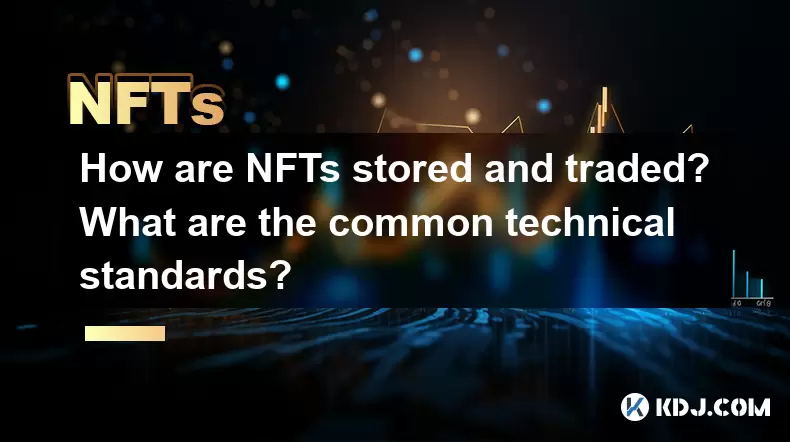
How are NFTs stored and traded? What are the common technical standards?
Jun 20,2025 at 08:49am
Understanding NFT Storage MechanismsNon-Fungible Tokens (NFTs) are digital assets that represent ownership of a unique item or piece of content, such as art, music, videos, or virtual real estate. The way NFTs are stored is crucial to their security and accessibility. Most NFTs are built on blockchain platforms like Ethereum, and the actual file—such as...
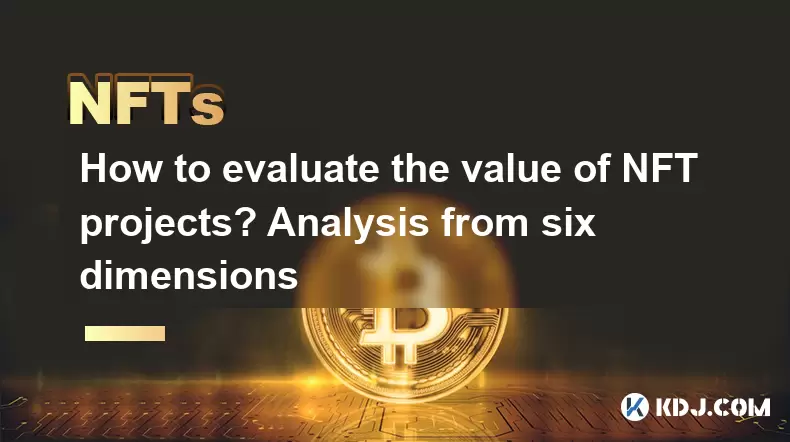
How to evaluate the value of NFT projects? Analysis from six dimensions
Jun 21,2025 at 02:28pm
1. Project Background and Team CredibilityEvaluating the value of NFT projects begins with a thorough understanding of its background and team composition. A credible project is usually backed by experienced developers, designers, and marketers who have a proven track record in blockchain or digital art industries. The presence of identifiable team memb...

What is the difference between NFT and digital collectibles? A must-read guide for beginners
Jun 19,2025 at 09:42pm
Understanding the Basics of NFTsNFTs, or Non-Fungible Tokens, are unique digital assets that represent ownership of a specific item or piece of content on the blockchain. Unlike cryptocurrencies such as Bitcoin or Ethereum, which are fungible and can be exchanged one-for-one, each NFT has distinct properties and cannot be directly replaced by another to...
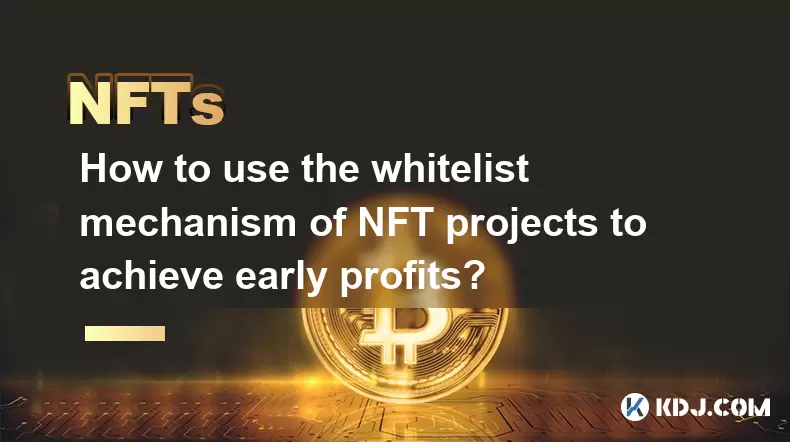
How to use the whitelist mechanism of NFT projects to achieve early profits?
Jun 21,2025 at 03:49am
Understanding the Whitelist Mechanism in NFT ProjectsThe whitelist mechanism is a popular strategy used by NFT project developers to allocate early access or exclusive minting rights to a select group of users. This system allows participants on the whitelist to mint NFTs before they are released to the general public, often at lower prices and with few...
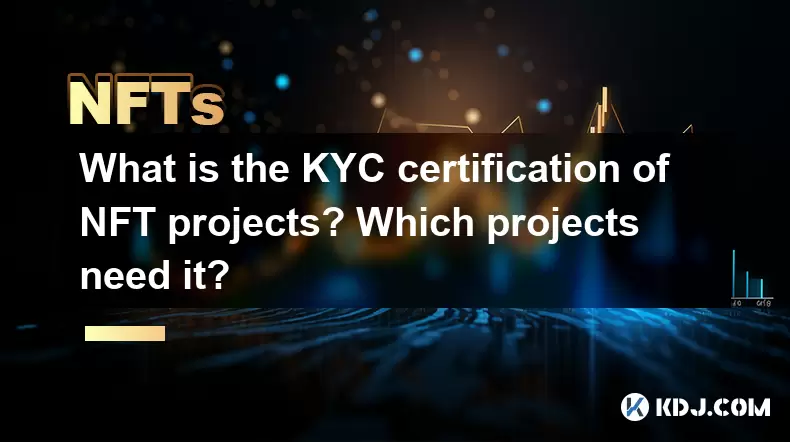
What is the KYC certification of NFT projects? Which projects need it?
Jun 21,2025 at 03:08pm
Understanding KYC Certification in the NFT SpaceKYC, or Know Your Customer, is a regulatory process used by businesses to verify the identity of their clients. In the context of NFT projects, KYC certification refers to the verification of user identities before they can participate in minting, trading, or selling NFTs on a platform. This practice is in...
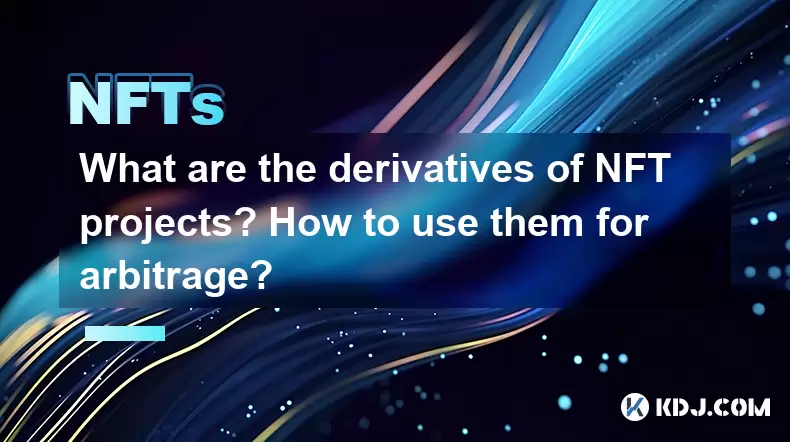
What are the derivatives of NFT projects? How to use them for arbitrage?
Jun 20,2025 at 06:14am
Understanding the Derivatives of NFT ProjectsNFTs, or non-fungible tokens, have evolved beyond simple digital collectibles. In recent years, derivatives of NFT projects have emerged as a new financial layer within the blockchain ecosystem. These derivatives are essentially financial instruments derived from the value and performance of underlying NFT as...

How are NFTs stored and traded? What are the common technical standards?
Jun 20,2025 at 08:49am
Understanding NFT Storage MechanismsNon-Fungible Tokens (NFTs) are digital assets that represent ownership of a unique item or piece of content, such as art, music, videos, or virtual real estate. The way NFTs are stored is crucial to their security and accessibility. Most NFTs are built on blockchain platforms like Ethereum, and the actual file—such as...

How to evaluate the value of NFT projects? Analysis from six dimensions
Jun 21,2025 at 02:28pm
1. Project Background and Team CredibilityEvaluating the value of NFT projects begins with a thorough understanding of its background and team composition. A credible project is usually backed by experienced developers, designers, and marketers who have a proven track record in blockchain or digital art industries. The presence of identifiable team memb...

What is the difference between NFT and digital collectibles? A must-read guide for beginners
Jun 19,2025 at 09:42pm
Understanding the Basics of NFTsNFTs, or Non-Fungible Tokens, are unique digital assets that represent ownership of a specific item or piece of content on the blockchain. Unlike cryptocurrencies such as Bitcoin or Ethereum, which are fungible and can be exchanged one-for-one, each NFT has distinct properties and cannot be directly replaced by another to...

How to use the whitelist mechanism of NFT projects to achieve early profits?
Jun 21,2025 at 03:49am
Understanding the Whitelist Mechanism in NFT ProjectsThe whitelist mechanism is a popular strategy used by NFT project developers to allocate early access or exclusive minting rights to a select group of users. This system allows participants on the whitelist to mint NFTs before they are released to the general public, often at lower prices and with few...

What is the KYC certification of NFT projects? Which projects need it?
Jun 21,2025 at 03:08pm
Understanding KYC Certification in the NFT SpaceKYC, or Know Your Customer, is a regulatory process used by businesses to verify the identity of their clients. In the context of NFT projects, KYC certification refers to the verification of user identities before they can participate in minting, trading, or selling NFTs on a platform. This practice is in...

What are the derivatives of NFT projects? How to use them for arbitrage?
Jun 20,2025 at 06:14am
Understanding the Derivatives of NFT ProjectsNFTs, or non-fungible tokens, have evolved beyond simple digital collectibles. In recent years, derivatives of NFT projects have emerged as a new financial layer within the blockchain ecosystem. These derivatives are essentially financial instruments derived from the value and performance of underlying NFT as...
See all articles

























































































